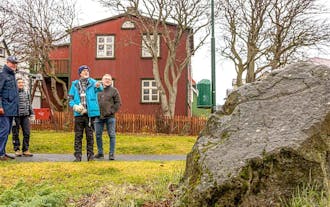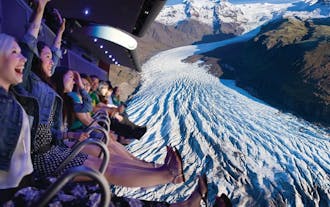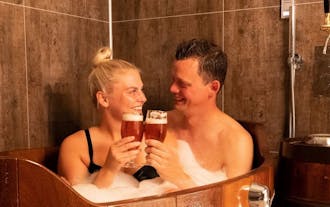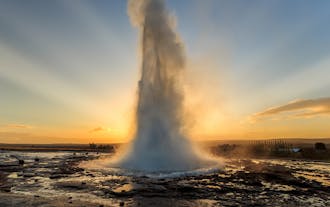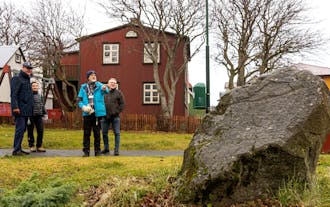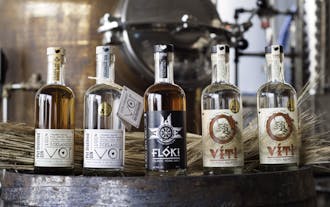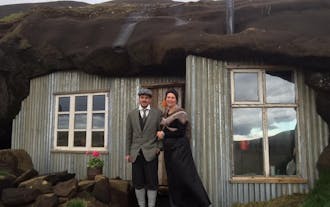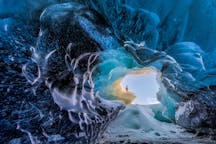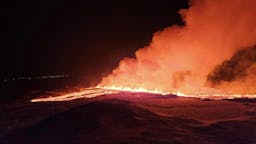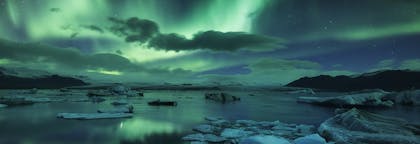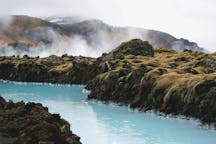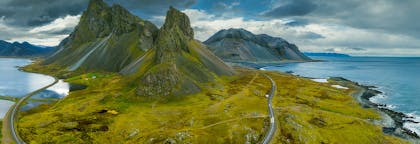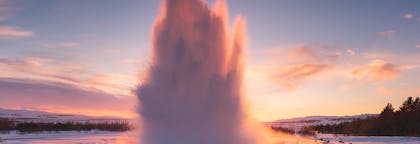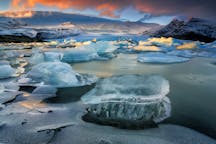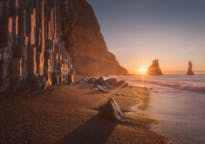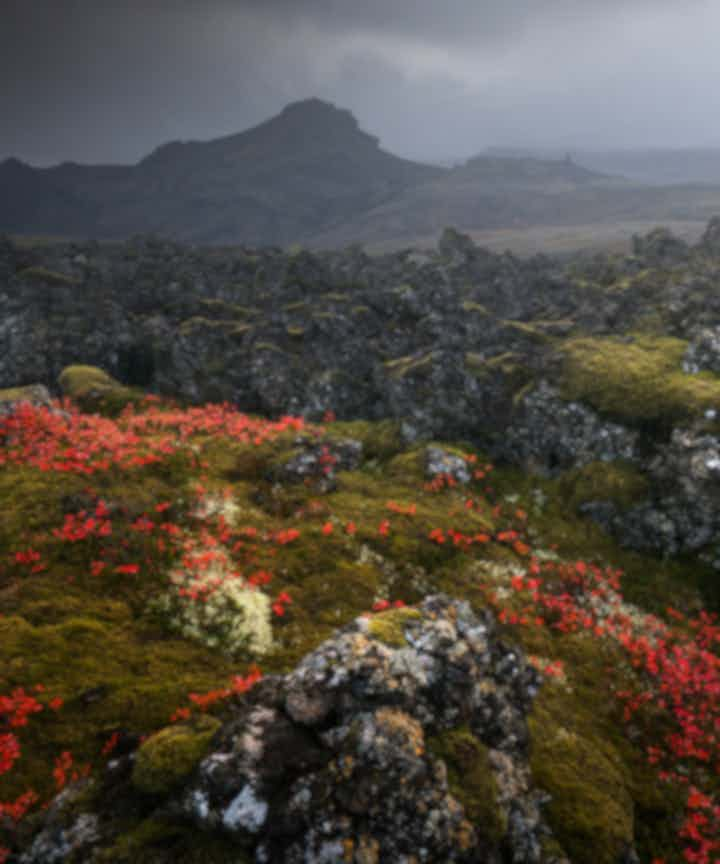
Best Culture Tours in Iceland
Select starting location
Select dates
Add travelers
Culture Tours
Refine the results by using the filters
Explore an unequalled wealth of tours and packages
Verified customer reviews
Read first-hand reviews by customers from across the world
Culture Tours in Iceland
Iceland's culture is as rich and varied as its dramatic landscape, and there's no better way to explore this facet of the Nordic island than through its range of culture tours. These excursions deeply dive into the heart of Icelandic tradition, history, and contemporary life.
Visitors can experience the old and the new with tours that explore everything from the sagas of the Vikings to the cutting-edge of Reykjavik's art scene. Whether through the intimate setting of a walking tour, the culinary adventure of food and drink experiences, or the specialized routes focusing on literature and architecture, these tours offer an authentic connection to the island's cultural soul.
Culture tours are tailored to various interests and physical abilities, ensuring that everyone, from history enthusiasts to art connoisseurs, can find a tour that resonates with their interests. The itineraries are designed to be both educational and engaging, often led by local experts who provide rich narratives and insights into Icelandic customs, folklore, and the arts.
These tours not only educate but also entertain, immersing travelers in activities unique to Icelandic culture, such as enjoying a traditional meal, participating in a craft workshop, or attending one of the many festivals that light up the country throughout the year.
The best culture tours in Iceland celebrate the uniqueness of the country's heritage and offer a window into the lives of its people. They are an essential experience for those looking to understand the country beyond its geysers and glaciers.
From the moment you step into the land of fire and ice, these culture tours promise to enrich your travels with memories and knowledge that will last a lifetime. Whether you're strolling through the historic streets of Reykjavik, savoring the flavors of local cuisine, or engaging with the vibrant arts scene, the cultural tapestry of Iceland is yours to discover.
Frequently asked questions
What is the best culture tour in Iceland?
Another top-rated culture tour in Iceland is a guided Golden Circle tour with geothermal greenhouses and transfer from Reykjavik rated 4.2 out of 5 stars by over 60 travelers. This eight-hour tour costs around 77 USD.
Another popular culture tour is the folklore walking tour of Reykjavik rated an average of 4.7 out of 5 stars and by over 30 travelers. This excursion costs about 41 USD.
Is it worth taking a culture tour in Iceland?
You'll learn about Iceland's Viking heritage, folklore, and modern way of life, giving you a greater appreciation for the nation's identity. Culture tours also offer opportunities to taste Icelandic cuisine and connect with its friendly people.
For those seeking a well-rounded travel experience beyond natural beauty, a culture tour adds depth and understanding to their visit to Iceland.
What are the cheapest culture tours in Iceland?
Iceland's second-cheapest cultural experience is an entry ticket to the Skogar museum in South Iceland for about 13 USD.
Another cheap cultural experience in Iceland is visiting the Chromo Sapiens art installation in Reykjavik for approximately 13 USD per person.
What are the best Reykjavik walking tours?
Other excellent Reykjavik walking tours include this walk with a Viking two-hour guided tour for around 43 USD and this 2.5-hour beer and schnapps walking tour, costing approximately 93 USD.
What are the best food and drink tours in Iceland?
Another excellent food tour is a private three-hour traditional Icelandic food tour of Reykjavik with an expert guide, which costs around 107 USD.
Food and drink enthusiasts should also check out this excellent three-hour brewery tour with dinner in Reykjavik for around 57 USD per person.
What are the most unique culture tours in Iceland?
Another unique culture tour is this entry ticket to the magic ice bar in Reykjavik, which includes a complimentary welcome drink. It costs about 32 USD per person.
A third unique culture tour in Iceland is a two-hour evening tour of the Imagine Peace Tower on Videy Island near Reykjavik for around 93 USD per traveler.
Is it best to reserve a spot on a culture tour prior to arrival in Iceland?
What language will the guide speak on a Reykjavik culture tour?
Can I drink in Iceland if I just turned 18?
Is there a hop-on hop-off sightseeing bus that operates around Iceland?
Where is the meeting point for the walking tours in Reykjavik?
Does the Reykjavik City Card provide discounts for culture tours?
Are there any culture tours that focus on Icelandic folklore and mythology?
For example, this magical 1.5-hour walking tour of Reykjavik includes stories of trolls, elves, and hidden people for around 40 USD per person.
How long do the most comprehensive culture tours in Iceland last?
Do culture tours in Iceland cater to special interest groups, like history buffs or art lovers?
For example, this small-group walking tour in Reykjavik focuses on history and culture, and this entry ticket to the Chromo Sapiens art installation in Reykjavik is perfect for art enthusiasts.
What kind of cultural insights can I expect from a food and drink tour in Iceland?
Can I engage with local Icelandic craftspeople or artists during culture tours?
What clothing is appropriate for a culture tour in Iceland, considering the weather?
Are there any cultural events or festivals in Iceland that I can attend through a tour?
What is the typical group size for a walking culture tour in Reykjavik?
If I have mobility issues, are there accessible culture tours available in Iceland?

Download Iceland’s biggest travel marketplace to your phone to manage your entire trip in one place
Scan this QR code with your phone camera and press the link that appears to add Iceland’s biggest travel marketplace into your pocket. Enter your phone number or email address to receive an SMS or email with the download link.
